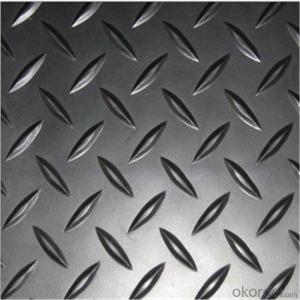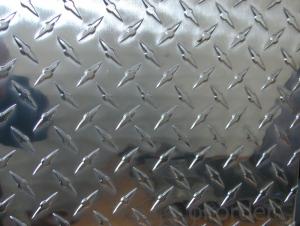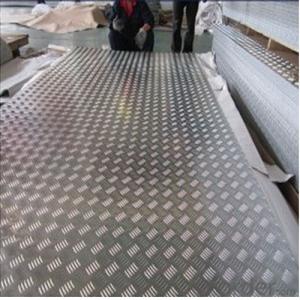Aluminum Diamond Plate 1/4 Thick
Aluminum Diamond Plate 1/4 Thick Related Searches
Led Light Bulbs For Ceiling Fixtures Led Lamps For Ceiling 42 In Ceiling Fan With Light Aluminum Coil Stock For Gutters Aluminum Foil For The Grill Hole Saw For Aluminum Plate Aluminum Tread Plate For Trailer Bow Plate For Aluminum Boat Aluminum Foil For Grow Room Aluminum Foil For Joint PainHot Searches
Stock Price For Aluminum Aluminum Coil Stock For Sale Aluminum Gutter Coil For Sale Used Aluminum Scaffolding For Sale 1/4 Aluminum Plate For Sale Aluminum Bar Stock For Sale Aluminum Round Stock For Sale Aluminum Diamond Plate For Sale Aluminum Scaffolding For Sale Craigslist 6061 Aluminum Plate For Sale Aluminum Dock Plate For Sale 7075 Aluminum Plate For Sale Aluminum Tread Plate For Sale Aluminum Checker Plate For Sale Aluminum Plate For Sale Near Me Plate Aluminum For Sale Aluminum Plate For Sale Aluminum Square Stock For Sale Aluminum Flat Stock For Sale Billet Aluminum Stock For SaleAluminum Diamond Plate 1/4 Thick Supplier & Manufacturer from China
Okorder.com is a professional Aluminum Diamond Plate 1/4 Thick supplier & manufacturer, offers integrated one-stop services including real-time quoting and online cargo tracking. We are funded by CNBM Group, a Fortune 500 enterprise and the largest Aluminum Diamond Plate 1/4 Thick firm in China.Hot Products
FAQ
- Variations in chemical composition and mechanical properties result in significant differences in the formability of aluminum sheet among different alloys. To enhance specific characteristics like strength, corrosion resistance, and formability, aluminum alloys are typically combined with elements such as copper, manganese, magnesium, and zinc. Aluminum alloys like the 1xxx series (pure aluminum) and the 3xxx series (manganese alloyed) are highly formable and commonly used for deep drawing applications. These alloys can be shaped into complex forms without cracking or tearing. In contrast, alloys with higher strength properties, such as the 2xxx series (copper alloyed) and the 7xxx series (zinc alloyed), generally have reduced formability. Although these alloys are often used in structural applications where strength is crucial, they require careful handling and processing to avoid defects during forming. Alloys in the 5xxx series (magnesium alloyed) offer a good balance of formability and strength. They are widely used in industries like automotive and aerospace, as they can be easily formed into different shapes while providing sufficient strength and corrosion resistance. It's important to note that the formability of aluminum sheet is not solely determined by the alloy composition. Other factors such as sheet thickness, forming temperature, and the specific forming process employed (e.g., deep drawing, bending, stretching) also influence formability. These factors interact with alloy properties to affect the formability characteristics of aluminum sheet. Therefore, careful selection of the appropriate alloy and process parameters is essential to achieve the desired formability for specific applications.
- Yes, aluminum sheets can be embossed or textured. The process of embossing or texturing aluminum sheets involves creating patterns or designs on the surface by pressing or rolling the sheet with specialized machinery. This can be done to enhance the aesthetic appearance of the sheet or to improve its functionality, such as adding grip or increasing strength. Embossed or textured aluminum sheets are commonly used in various industries, including automotive, interior design, and packaging.
- The minimum thickness of aluminum curtain wall is 2, 5mm or 3mm?
- JGJ133-2001 3.3.10Generally, aluminum plate refers to aluminum veneer;The thickness requirements of different metal plates are specified in 133 Li and 3.3 bars
- The different forming methods for aluminum sheets include rolling, stamping, deep drawing, bending, and stretch forming. Rolling involves passing the aluminum sheet through a series of rollers to reduce its thickness and increase its length. Stamping uses a die to shape the sheet by applying pressure. Deep drawing involves pulling the sheet into a die cavity to create a deep and complex shape. Bending is used to create curves and angles in the sheet by applying force. Stretch forming stretches the sheet over a die to create a contoured shape.
- Where does China make aluminum plate?
- In many parts of the country have aluminum factory, the old state-owned enterprises have 101, SWA aluminum plant, located in the southwest, northeast china. The emerging aluminum processing base in Henan, due to resource advantages, the largest aluminum factory, the price is relatively low.
- Yes, aluminum sheets can be used for missile components. Aluminum is a versatile and lightweight material that possesses excellent strength-to-weight ratio properties. These characteristics make it a suitable choice for various aerospace applications, including missile components. Aluminum sheets offer advantages such as corrosion resistance, high thermal conductivity, and ease of fabrication. Additionally, aluminum can withstand extreme temperatures, making it suitable for use in missile components that may experience high heat during flight. However, it is important to consider the specific requirements of the missile system and consult with experts in the field to ensure that aluminum sheets are suitable for the intended application.
- What does aluminum plate "1060-H24" mean?
- Each digit in the 1060-H24 stands for the following meanings:First, a number of Arabia 1 is representative of pure aluminum (aluminum is aluminum content above 99% aluminum, in addition to the beginning and start with 2-8 are 2### for copper and aluminum magnesium alloy, 3### aluminum manganese alloy, 4### alloy, 5### alloy and so on)
- Aluminum sheets possess outstanding fire resistance characteristics. This material, aluminum, is non-combustible, meaning it does not burn or contribute to the propagation of fire. In fact, aluminum has a remarkably high melting point of approximately 660 degrees Celsius (1220 degrees Fahrenheit), rendering it highly resistant to heat. When subjected to fire, aluminum generates a thin layer of oxide on its surface, creating a protective barrier that hinders further oxidation. This oxide layer is highly stable and effectively prevents the material from igniting or emitting flammable gases. Moreover, aluminum sheets exhibit low thermal conductivity, which reduces the ease with which they transfer heat compared to other metals. This property further enhances their fire resistance. These fire-resistant attributes position aluminum sheets as a preferred choice in a wide range of applications where fire safety is a primary concern, including building construction, aerospace industry, automotive manufacturing, and electrical enclosures. Aluminum sheets are commonly utilized in exterior cladding, roofing, and insulation systems, providing an additional layer of safeguard against fire hazards. It is essential to acknowledge that while aluminum sheets themselves possess high fire resistance, the overall fire performance of a structure or system relies on factors such as design, installation, and the use of other materials in conjunction with aluminum sheets. Therefore, it is vital to adhere to appropriate fire safety regulations and guidelines to ensure optimal fire resistance in any given application.














































